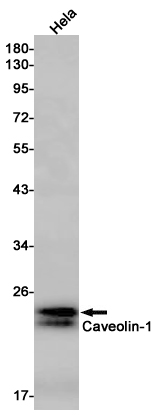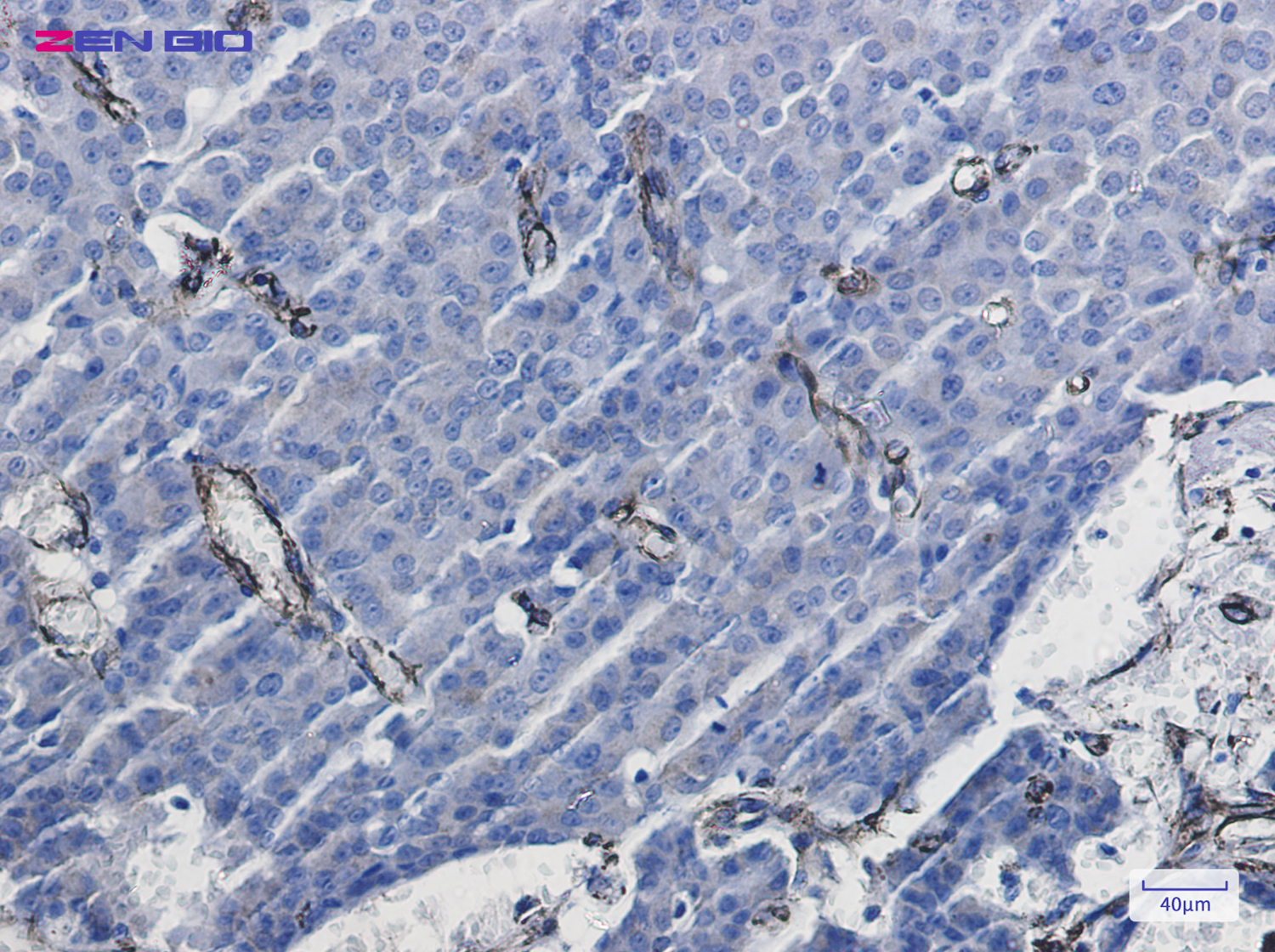-
Product Name
Anti-Caveolin-1 Rabbit antibody
- Documents
-
Description
Caveolin-1 Rabbit polyclonal antibody
-
Tested applications
WB, IHC-P, ICC/IF
-
Species reactivity
Human
-
Alternative names
CGL3; PPH3; BSCL3; LCCNS; VIP21; MSTP085 antibody
-
Isotype
Rabbit IgG
-
Preparation
Antigen: A synthetic peptide of human Caveolin-1
-
Clonality
Polyclonal
-
Formulation
Supplied in 50nM Tris-Glycine(pH 7.4), 0.15M Nacl, 40%Glycerol, 0.01% sodium azide and 0.05% BSA.
-
Storage instructions
Store at -20°C. Stable for 12 months from date of receipt.
-
Applications
WB: 1/1000-1/5000
IHC: 1/20
ICC/IF: 1/20
-
Validations

Western blot detection of Caveolin-1 in Hela cell lysates using Caveolin-1 Rabbit pAb(1:1000 diluted).Predicted band size:20kDa.Observed band size:20kDa.

Immunohistochemistry of Caveolin-1 in paraffin-embedded Human breast cancer tissue using Caveolin-1 Rabbit pAb at dilution 1/20
-
Background
Swiss-Prot Acc.Q03135.May act as a scaffolding protein within caveolar membranes. Interacts directly with G-protein alpha subunits and can functionally regulate their activity . Involved in the costimulatory signal essential for T-cell receptor (TCR)-mediated T-cell activation. Its binding to DPP4 induces T-cell proliferation and NF-kappa-B activation in a T-cell receptor/CD3-dependent manner. Recruits CTNNB1 to caveolar membranes and may regulate CTNNB1-mediated signaling through the Wnt pathway. Negatively regulates TGFB1-mediated activation of SMAD2/3 by mediating the internalization of TGFBR1 from membrane rafts leading to its subsequent degradation (PubMed:25893292). Mediates the recruitment of CAVIN proteins (CAVIN1/2/3/4) to the caveolae (PubMed:19262564).
Related Products / Services
Please note: All products are "FOR RESEARCH USE ONLY AND ARE NOT INTENDED FOR DIAGNOSTIC OR THERAPEUTIC USE"
